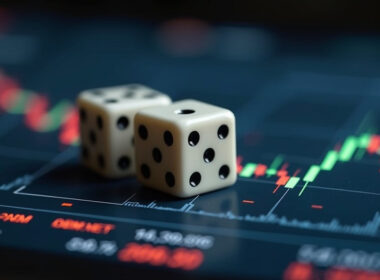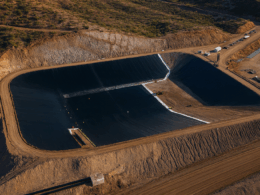A few weeks ago, I made the following recommendations in my letter “The Next Fire Sale“:
- Market Vectors Gold Miners ETF (NYSE: GDX)
- Market Vectors Junior Gold Miners ETF (NYSE: GDXJ)
- SPDR S&P Oil & Gas Exploration & Production ETF (NYSE: XOP)
- Claymore Oil Sands ETF (TSX: CLO).
Since that letter on October 2, 2011:
- Market Vectors Gold Miners ETF (NYSE: GDX) – up 6.45%
- Market Vectors Junior Gold Miners ETF (NYSE: GDXJ) – up 12.67%.
- SPDR S&P Oil & Gas Exploration & Production ETF (NYSE: XOP) – up 27.16%
- Claymore Oil Sands ETF (TSX: CLO) – up 19.64%.
Not bad in such a volatile market…
Regardless, markets have remained volatile and investing has become mundane. The big question is: When is liquidity and the risk-tolerant money coming back?
September, which is generally a down month, is over. October thus far, despite volatility, has been performing well. On Friday, U.S. stocks advanced, giving the Standard & Poor’s 500 its biggest weekly gain since July 2009, as retail sales beat economists’ estimates and the G20 began discussions on Europe’s debt crisis.
Regardless of politics and worldwide economic conundrums, historical trading patterns show us that the sell in May theory still works. Over the last 40 years, selling in May and buying back in October would net you a profitable return – even with the dramatic swings in prices over the last 40 years.The only down month during this time (October – May) would be February, as profit taking from past months come into play.
The rating agencies haven’t stopped their downgrades. Fitch has just downgraded UBS and has now put Morgan Stanley, Bank of America, Goldman, BNP, Deutsche Bank, and SocGen on watch negative. As more negative news emerges, investors continue to hold onto their cash. But is this smart?
The answer lies in whether you believe the dollar will continue its dominance in the market. While it remains the world’s reserve currency, it also belongs to the world’s largest debtor nation.
Countries around the world have been dumping US treasuries with reckless abandon. In the last six weeks, foreigners have dumped $74 billion in treasuries – the biggest sequential outflow in history. Even Bill Gross, founder and managing director of the world’s largest bond fund, is having a bad year.
In his October 2011 investment outlook report:
“There is no “quit” in me or anyone else on the PIMCO premises. The early morning and even midnight hours have gone up, not down, to match the increasing complexity of the global financial markets. The competitive fire burns even hotter. I/ we respect our competition but we want to squash them each and every day. You the client have 100% of our attention as always, as do your portfolios. I am just having a bad year. My fabulous rock of a wife, Sue, always tells me that by December 31st, the alpha is always green, not red, but this year will be a long shot. This year is a stinker. PIMCO’s centerfielder has lost a few fly balls in the sun.” – Bill Gross
When the world’s largest bond manager is having a bad year, you know things aren’t good.
As a matter of fact, Jim Rogers, the former Quantum Fund co-founder said he would quit if he was a bond portfolio manager. In a recent interview with CNBC, Jim Rogers said the U.S. economy is likely to experience a period of stagflation worse than the 1970s, which would cause bond yields to spike. Rogers said governments were lying about the inflation problem and the recent rally in Treasurys was a bubble:
“As the inflation numbers get worse and as governments print more money and as governments have to issue many, many more bonds – somewhere along the line we get to the point when (bond prices) go down.”
Between 1974 and 1978 average inflation in the U.S. was at 8 percent, while unemployment hit a peak of 9 percent in May 1975. Currently, unemployment is at 9.1 percent while CPI is at 3.8 percent.
Rogers believes inflation will get much worse this time because in the 1970s only the Fed was printing money, whereas now many global central banks have been easing monetary policy:
“Bernanke is obviously backing the market again and the Federal Reserve has more money than most of us – so they can drive interest rates down again. As I say they are making the bubble worse…I wouldn’t advise anybody to buy bonds, I would advise you to sell bonds. If I were a bond portfolio manager, I would get another job…In the 70s you didn’t make much money in stocks, you made fortunes owning commodities.”
Rogers’ view is at odds with others such as economist Nouriel Roubini who have been talking about a depression. Other economists have said the U.S. is experiencing a “balance sheet recession”, just as Japan did in the 1990s, and that means the U.S. risks a long period of falling prices and asset values. Regardless of which viewpoint you take on, let’s take a look at commodities.
Base Metals
I continue to believe that commodity price expectations will remain the primary driver of base metal and bulk commodity equity valuations. Despite the recent commodity price declines, which reflect fears of global recession, I don’t think commodity prices will fall back to recessionary levels – which means there remains an opportunity to participate in undervalued commodity equities.
For now, the world’s major economies are either unable or unwilling to provide the sort of liquidity injections we saw in 2008 and 2009. But given the circumstances, I still expect a strong infusion of liquidity in the near future.
As such, I believe commodity prices should be fine as I expect continued strong economic growth in China and much of the developing world – while this may be for the short term, we have to look at things on a near-term basis now given the volatility of the markets.
China alone now accounts for about 40% of global consumption of most of the industrial commodities. Of the base metals, the fundamentals for copper are the best – as they always have been used as a gauge for worldwide growth.
Over the last few years, I have had numerous Chinese businessmen come from abroad and ask me for shipments of both iron ore and coking coal – the primary drivers for steel production. They are willing to buy whatever they can get their hands on. While this in no way represents the overall market, it shows me that the demand for these basic materials from China remains strong – as it does in other developing countries. If you have coal or iron ore, someone will buy it.
For the rest of 2011, I expect base metal prices and coal to remain at, or higher, than current levels – based on both short term fundamentals and the possibility of liquidity injections by world governments.
Copper
The free fall in the copper price over the last quarter has made it one of the worst performers amongst commodities. From interim highs at the end of July to the end of September, copper dropped 32% from highs of US$4.50/lb to lows of US$3.07/lb.
During any sort of commodity sell off, copper generally leads the way and this was no different given the sell off last month. The weakness driving copper lower has been driven on speculation that demand would decline in a slowdown in global economies, particularly China.
However, I expect copper to rebound back up between $3.75 – $3.90 before the year is over but trend lower early 2012. Of course, this forecast could easily change given any major liquidity injections by the world governments. This is a short term price target and over the next few years, copper prices will remain subdued to reflect my view that worldwide economies will slow (see The Dangerous Unknown). As this happens, copper production will decrease which will eventually force a shortage in copper by 2015 – at which point, I expect copper prices to surge once again.
Uranium
While the ongoing nuclear crisis in Japan has shaken the world’s confidence in nuclear energy and placed a significant overhang on the uranium market, this remains temporary.
Short term, we may see more weakness in the uranium market. But in the medium to long term, the nuclear renaissance will continue with China and other emerging economies leading the way. (see Back to Reality)
Gold
Again, my view remains unchanged.
On September 26, 2011, the CME Group raised initial margin requirements on COMEX gold futures by another 21% – the fifth raise this year. This once again forced speculators out, forcing the price of gold down. We have seen this over the past year as gold sells off, only to rise higher.
This, along with other contributing factors – such as the redemptions of gold holdings where investors sold positive positions in gold to cover losses in other asset classes – has caused gold to decline back to the $1600 range. Given fundamentals and the strong possibility of another liquidity injection, gold at these prices should be viewed as a buying opportunity. This includes gold equities, which should recover from current historical low trading multiples to much higher levels.
Final Thoughts
The world is coming close to finalizing a plan to bailout Europe. I fully expect a major infusion of liquidity, which should bolster both stocks and precious metals. Look for buying opportunities in the market ahead of any major announcements. While the market has moving up based on this premise, there remains room for more upside short term.
Ride the momentum.
Until next week,
Ivan Lo
Equedia Weekly

Questions?
Call Us Toll Free: 1-888-EQUEDIA (378-3342)
Forward-Looking Statements
This Newsletter and report contains certain forward-looking statements that may involve a number of risks and uncertainties. Actual events or results could differ materially from current expectations and projections. Except for statements of historical fact relating to the project, certain information contained herein constitutes “forward-looking statements”. Forward-looking statements are frequently characterized by words such as “plan”, “expect”, “project”, “intend”, “believe”, “anticipate” and other similar words, or statements that certain events or conditions “may” or “will” occur.
Except for the statements of historical fact, the information contained herein is of a forward-looking nature. Such forward-looking information involves known and unknown risks, uncertainties and other factors which may cause the actual results, performance or achievement of the Company to be materially different from any future results, performance or achievements expressed or implied by statements containing forward-looking information.
Although the Company has attempted to identify important factors that could cause actual results to differ materially, there may be other factors that cause results not to be as anticipated, estimated or intended. There can be no assurance that statements containing forward looking information will prove to be accurate as actual results and future events could differ materially from those anticipated in such statements. Accordingly, readers should not place undue reliance on statements containing forward looking information. Readers should review the risk factors set out in the Company’s prospectus and the documents incorporated by reference.
Cautionary Note to U.S. Investors Concerning Estimates of Inferred Resources
This presentation uses the term “Inferred Resources”. U.S. investors are advised that while this term is recognized and required by Canadian regulations, the Securities and Exchange Commission does not recognize it. “Inferred Resources” have a great amount of uncertainty as to their existence, and great uncertainty as to their economic and legal feasibility. It cannot be assumed that all or any part of an Inferred Resource will ever be upgraded to a higher category. Under Canadian rules, estimates of “Inferred Resources” may not form the basis of feasibility or other economic studies. U.S. investors are also cautioned not to assume that all or any part of an “Inferred Mineral Resource” exists, or is economically or legally mineable.
Disclaimer and Disclosure
Disclaimer and Disclosure Equedia.com & Equedia Network Corporation bears no liability for losses and/or damages arising from the use of this newsletter or any third party content provided herein. Equedia.com is an online financial newsletter owned by Equedia Network Corporation. We are focused on researching small-cap and large-cap public companies. Our past performance does not guarantee future results. Information in this report has been obtained from sources considered to be reliable, but we do not guarantee that it is accurate or complete. This material is not an offer to sell or a solicitation of an offer to buy any securities or commodities.
Equedia.com has been compensated to perform research on specific companies and therefore information should not be construed as unbiased. Each contract varies in duration, services performed and compensation received. Equedia.com is not responsible for any claims made by any of the mentioned companies or third party content providers. You should independently investigate and fully understand all risks before investing. We are not a registered broker-dealer or financial advisor. Before investing in any securities, you should consult with your financial advisor and a registered broker-dealer. The information and data in this report were obtained from sources considered reliable. Their accuracy or completeness is not guaranteed and the giving of the same is not to be deemed as an offer or solicitation on our part with respect to the sale or purchase of any securities or commodities. Any decision to purchase or sell as a result of the opinions expressed in this report OR ON Equedia.com will be the full responsibility of the person authorizing such transaction.
Please view our privacy policy and disclaimer to view our full disclosure at http://equedia.com/cms.php/termsr. Our views and opinions regarding the companies within Equedia.com are our own views and are based on information that we have received, which we assumed to be reliable. We do not guarantee that any of the companies will perform as we expect, and any comparisons we have made to other companies may not be valid or come into effect. Equedia.com is paid editorial fees for its writing and the dissemination of material and the companies featured do not have to meet any specific financial criteria. The companies represented by Equedia.com are typically development-stage companies that pose a much higher risk to investors. When investing in speculative stocks of this nature, it is possible to lose your entire investment over time. Statements included in this newsletter may contain forward looking statements, including the Company’s intentions, forecasts, plans or other matters that haven’t yet occurred. Such statements involve a number of risks and uncertainties. Further information on potential factors that may affect, delay or prevent such forward looking statements from coming to fruition can be found in their specific Financial reports. Equedia Network Corporation is a distributor (and not a publisher) of content supplied by third parties and Subscribers. Accordingly, Equedia Network Corporation has no more editorial control over such content than does a public library, bookstore, or newsstand. Any opinions, advice, statements, services, offers, or other information or content expressed or made available by third parties, including information providers, Subscribers or any other user of the Equedia Network Corporation Network of Sites, are those of the respective author(s) or distributor(s) and not of Equedia Network Corporation. Neither Equedia Network Corporation nor any third-party provider of information guarantees the accuracy, completeness, or usefulness of any content, nor its merchantability or fitness for any particular purpose.












